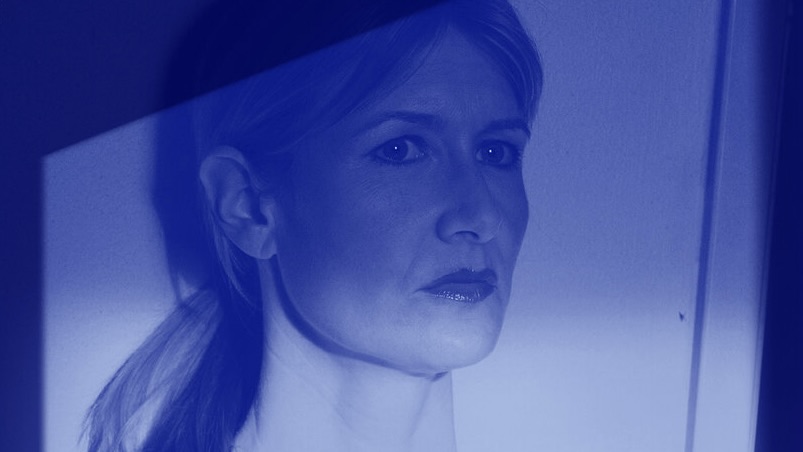Costume designer Heidi Bivens unravels the fashion of David Lynch’s Inland Empire
As one of MUBI Podcast's "Ladies of Lynch" Heidi Bivens breaks down everything she learned working with the master auteur

“He was very hands on with everything even special effects”, Heidi Bivens tells me about her experience on set with legendary auteur David Lynch. While HBO’s Euphoria propelled the costume designer into the spotlight (documenting her process in Euphoria Fashion), it was 2006’s Inland Empire that she marks her big break.
“He didn’t think the open wound looked real,” Bivens recalls the day they shot a stabbing in the nightmarish film starring Lara Dern. “So he went to the craft service table, he got a slice of pizza and took the cheese off so it was like Freddy Krueger-looking skin. He ripped the actor’s shirt and put it behind the rip, and that’s what you see in the movie.”
Bivens is among many notable Lynch collaborators featured on the latest season of the MUBI Podcast. Season 9, titled Ladies of Lynch, explores the subversive female characters born from the filmmaker’s chaotic mind. Ranging from Isabella Rossellini’s iconic Dorothy Vallens in Blue Velvet to Jennifer Lynch, the director’s daughter and a filmmaker in her own right. The season tracks these figures across Lynch’s decades-long career, from the small-town mysteries of Twin Peaks to the neo-noir complexity of his later work.
The costume designer’s deep appreciation for Lynch’s vision pre-dates her work on Inland Empire. Bivens explains that she was already intimately familiar with his filmography, citing his work as foundational to her career aspirations. “Watching Blue Velvet and Wild at Heart and Twin Peaks made me want to work in film and television,” she recalls. “They’re what set me on my path.”
So what does it take fashioning the enigmatic world of David Lynch? For Bivens’ it was a mix of intuition and an intrinsic understanding of the source material. “Throughout his career he created such a distinct milieu for the world of his films,” she explains. “I was already familiar with his aesthetic”.
“The looks of the girls on Twin Peaks are consistently on people’s mood boards”
Heidi Bivens
For Inland Empire, Bivens’ innate understanding of Lynch’s aesthetic meant embracing a skewed version of normality – a universe where nothing is as it seems. For Laura Dern’s character, Nikki Grace, a Hollywood star entangled in a nightmarish production, Bivens had to visually ground the performance while hinting at the underlying chaos.
Classic and timeless is Darren’s wardrobe. Mid-century silhouettes open the scenes of glamour before unravelling as she’s driven to madness. Balancing current trends with classic nods to Hollywood ground each scene surreal scene in reality.
One nightmarish scene is the perfect time capsule of mid-2000s fashion, with a crew of party girls in mini-skirts, cutoffs and heels. “He gave me a little morsel and I’d run with it,” Bivens explains, highlighting how Lynch trusted her to interpret his fragmented vision into tangible, destabilised costumes.
The timeless and the contemporary has long defined the fashions of Lynchian women. “The looks of the girls on Twin Peaks are consistently on people’s mood boards,” says Bivens. Blending the 1950s and 1990s styles create a subversive, nostalgic look that often conceals a character’s true nature. On the costumes Bivens states: “[Patricia Norris] created iconic women that stand the test of time and continue to influence and inspire people”.
The central lesson Bivens took away from her time with Lynch was the importance of feeling. A reliance on intuition that now fuels her own creative process. While the high-fashion expectations for a show like Euphoria are worlds away from the improvised chaos of Inland Empire, Bivens applies the same principle: prioritising emotional resonance over rigid reference. “I’m taking inspiration from lots of different places, it won’t be too derivative,” she states. This allows her to create looks that feel fresh and authentic, avoiding costumes that merely look like copies of past trends.
“There isn’t any right or wrong way to get inspired. It can come from anywhere at anytime”
Heidi Bivens
She describes her method akin to being “a DJ,” mixing diverse elements to create something new. This means constantly observing the contemporary world. “There isn’t any right or wrong way to get inspired. It can come from anywhere at anytime,” she explains. She’s often found taking photos of people on the street and stopping strangers to ask where they bought their clothes. This hands-on, real-world research is key to establishing an initial point of reference that “feels authentic and feels real” before translating it into the heightened reality of her television work.
The impact of Lynch’s female characters on her aesthetic remains evident today. When asked which “Lynch lady’s” wardrobe she’d most want to raid, Bivens hesitates before settling on Patricia Arquette in Lost Highway.
“She’s so sexy in that movie. Her style is classic and timeless.” Arquette’s character, Renee Madison, with her sleek, minimalist, and dangerous glamour, clearly embodies the kind of lasting style Bivens strives to achieve. “Even though it was 1997, it still feels current,” she concludes, perfectly summing up the goal of any successful costume design: creating wardrobes that defy their era and continue to speak to audiences long after the credits roll.
Listen to the MUBI Podcast Season 9, Ladies of Lynch on Spotify and Apple Music.
